
I’ll admit that my favorite selection from the shiny white Good Humor jalopy that cruised our neighborhood was simply called “Toasted Coconut”: vanilla ice cream on a stick, coated with lots of sugary-sweet coconut. On the last fateful day that I’d ever see the Good Humor man, the bully next door decided to spray him with water from a hose as he slowly circled our block. He beat a hasty retreat and never came back. Being blackballed by the Good Humor man made that the worst summer of my life. I don’t know what happened to the neighborhood bully, but now that I’m an adult I can have Toasted Coconut ice cream whenever I want. And I do.–David Lebovitz
How do I keep ice cream soft?
If you’re one of those folks who prefer a softer consistency to your ice cream, consume it straight out of the ice cream maker. And if you have leftovers that you tuck in the freezer, be certain to press a piece of plastic wrap directly against the surface of the ice cream prior to securing the lid on the container. The ice cream will harden overnight in the freezer, though you can always let it soften at room temperature about around 10 minutes or so before you scoop.

Toasted Coconut Ice Cream
Equipment
- Ice cream maker
Ingredients
- 1 cup dried shredded coconut, sweetened or unsweetend
- 1 cup whole milk
- 2 cups heavy cream
- 3/4 cup granulated sugar
- Big pinch of kosher or sea salt
- 1 vanilla bean, split in half lengthwise
- 5 large egg yolks
- 1/2 teaspoon vanilla extract, or 1 teaspoon rum
Instructions
- Preheat the oven to 350°F (175°C).
- Spread the coconut on a rimmed baking sheet and bake for 5 to 8 minutes, stirring it frequently so it toasts evenly. Remove it from the oven when it’s fragrant and golden brown and immediately tip the coconut onto a large plate to cool.
- In a medium saucepan over medium heat, warm the milk, 1 cup of the heavy cream, sugar, and salt. Stir in the toasted coconut. Using a paring knife, scrape all the vanilla seeds into the warm milk and then toss in the pod as well. Cover, remove from the heat, and let steep at room temperature for 1 hour.
- Rewarm the coconut-infused mixture. Place a mesh strainer over another medium saucepan and strain the coconut-infused liquid through the strainer into the saucepan. Press down on the coconut very firmly with a flexible rubber spatula to extract as much of the flavor as possible. Remove the vanilla bean halves and reserve both it and the coconut for another use.
☞ TESTER TIP: What to do with that leftover coconut? Spread it on a parchment-lined rimmed baking sheet, toast in the 350°F oven until golden brown, about 10 minutes. Then sprinkle it atop the ice cream before serving. You’ll want to stash any extra toasted coconut in the fridge.
- Pour the remaining 1 cup heavy cream into a large bowl and place the mesh strainer on top. In a separate medium bowl, whisk together the egg yolks. Slowly pour the warm coconut-infused mixture into the egg yolks, whisking constantly, then scrape the warmed egg yolks back into the saucepan.
- Stir the mixture constantly over medium heat with a heatproof spatula, scraping the bottom as you stir, until the mixture thickens and coats the spatula, 6 to10 minutes. Pour the custard through the strainer and stir it into the cream. Mix in the vanilla or rum. Fill a large bowl halfway with ice water, place the pan in the ice water, and stir until cool.
- Cover and refrigerate the mixture thoroughly in the refrigerator and then freeze it in your ice cream maker according to the manufacturer’s instructions.
- Serve the ice cream immediately if you like a soft consistency or cover and freeze at least overnight for a sturdier, more traditional ice cream texture.

Nutrition
Nutrition information is automatically calculated, so should only be used as an approximation.
Recipe Testers’ Reviews
Ever since a trip to Belize where I had the most delicious coconut ice cream, I’ve been searching for one equally good. No luck—until now. This ice cream is different from the one I had in Belize in that it is made from toasted coconut, but, believe me, this is delicious.
The toasting of the shredded coconut gives the ice cream a deep and layered flavor. The recipe suggests using unsweetened coconut, but my grocery store was out, so I used sweetened with no regrets. And I would see no reason to use unsweetened next time I make it. I also used vanilla as the final flavoring rather than the rum. The ice cream is smooth, rich, creamy, full of flavor—need I go on. You get the idea. Try it. It’s really good!
If you are willing to eat the ice cream right out of the ice cream maker, it’s still a bit soft. More time for a final freeze.
This recipe is an absolute delight. In terms of taste and ultra-creamy consistency, it is an all-out winner. A custard-based ice cream is always incredibly rich, which this is, but the achievement here is that the toasted coconut flavor isn’t buried under all that fat.
I used my paella pan to toast the coconut. I know this may seem like absolute heresy but it was a gift from someone who forgot about my serious seafood allergy. So toasting coconut it is. I’m also rather forgetful and found it easier to control by toasting it on the stovetop. The recipe is easy to follow and the ice cream comes together quickly; this fairly effortless ice cream tastes like hard work and makes an impressive dessert.
We didn’t add anything to ours but I would love to try it with chocolate sauce and more toasted coconut. Or salted caramel sauce. Or a swirl of mango, as Lebovitz suggests.
We LOVE coconut in this house so when I had the opportunity to test a toasted coconut ice cream I knew I had to do it. I have made various versions of coconut ice creams in the past but this one was definitely in the top of the stack. The coconut flavor is subtle yet tasty, reminding me of our favorite Thai restaurant’s coconut ice cream that is served with sticky rice and mango.
I used organic unsweetened coconut for this recipe and found it did not toast as nicely as sweetened versions. Perhaps in the future I will spray a little coconut oil spray on the baking sheet prior to baking it to help with that. The flavor was still there though so on with the recipe! I allowed the milk/cream/sugar mixture come up just to under a boil (scalded) before adding my vanilla beans and their seeds and then covered the pot and let it steep for approximately 1 hour. The mixture was actually still relatively warm at this point so I only warmed it slightly before pressing through a fine-mesh strainer. I rinsed the vanilla beans as suggested and tucked them into some sugar for my future coffee.
I used a wonderfully dark artisan rum instead of vanilla which I added after the mixture had cooled just a little bit so as not to lose the flavor of the rum and then continued to cool it in an ice bath until ready to refrigerate. Refrigerated overnight and churned in my Cuisinart ice cream maker the next day. This was a wonderful ice cream that will definitely make a reappearance. I can see topping it with a brûléed pineapple or banana topping or with a dark chocolate “shell” topping and the toasted coconut mixture mentioned below (Mars bar anyone?!)
My only complaint was the thought of throwing out the coconut mixture after extracting the ice cream base! After tasting the yummy leftover coconut mixture, I just couldn’t throw it away! It reminded me so much of the mixture from making coconut macaroons that I almost just whipped up some of the egg whites and made it into that (and may try that another time) but it made me think that perhaps I could just toast or dry that mixture in the oven for a bit and then save it for topping the ice cream! Bingo! I sprayed a cookie sheet with coconut oil, spread the coconut mixture on the sheet, and popped it into a 350°F oven for about 10 minutes until toasted. After it cooled a bit, I broke it up and tossed it into a bag in the refrigerator and used it to sprinkle on top of this delicious ice cream. Perfect crunchy contrast to the smooth coconut ice cream!
This creamy treat is my idea of coconut heaven. It is that good, and may even have the power to convert self-professed coconut haters! Not a surprise when you learn that the recipe was from ice cream guru David Lebovitz. Because this is a custard-based ice cream, it requires a few more steps to make than some others. The end result is so worth it, however, producing a wonderfully rich, creamy, and flavorful dessert.
I used dried unsweetened shredded coconut. Be vigilant while it is toasting, as it can go from just right to burned very quickly. You want to take it to a deep golden brown for best flavor. In my oven, that happened just shy of 7 minutes.
In order to infuse the cream with maximum flavor, I warmed it to about 170°F in both steps 2 and 3, hot to the touch, but well short of boiling. I would stick to kosher or sea salt in order to avoid the harshness that table salt can bring. The vanilla flavor was deep and fragrant, but you can probably add a bit more vanilla extract if you do not have a vanilla bean. The sweetness level was just right with unsweetened dried coconut. Might have been too sweet with sweetened variety.
I followed the excellent suggestion to save the coconut instead of discarding it after the infusion. This produced an excellent topping for sprinkling back over the top. I inadvertently got it much darker than I intended during the “re-crisping” bake. This turned out to be a lucky accident, as the one shade shy of burned shreds provided a wealth of flavor. My tasters didn’t complain a bit when I also sprinkled on some bittersweet chocolate shavings.
On day one, this ice cream was soft and easily scoopable. On day two, it firmed up a bit but continued to be creamy and delicious. I can’t advise you on day 3 because it didn’t even come close to lasting that long.
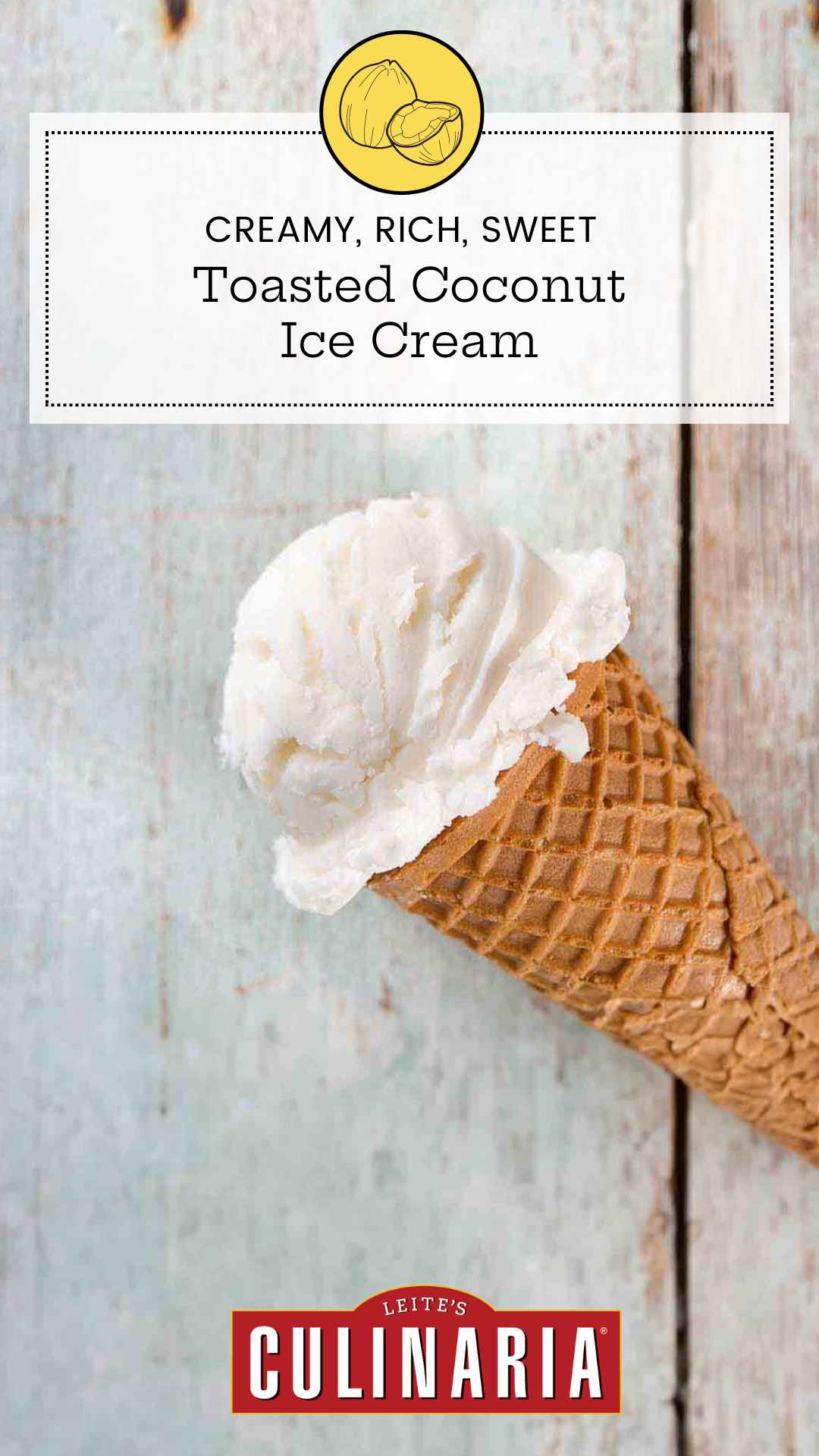
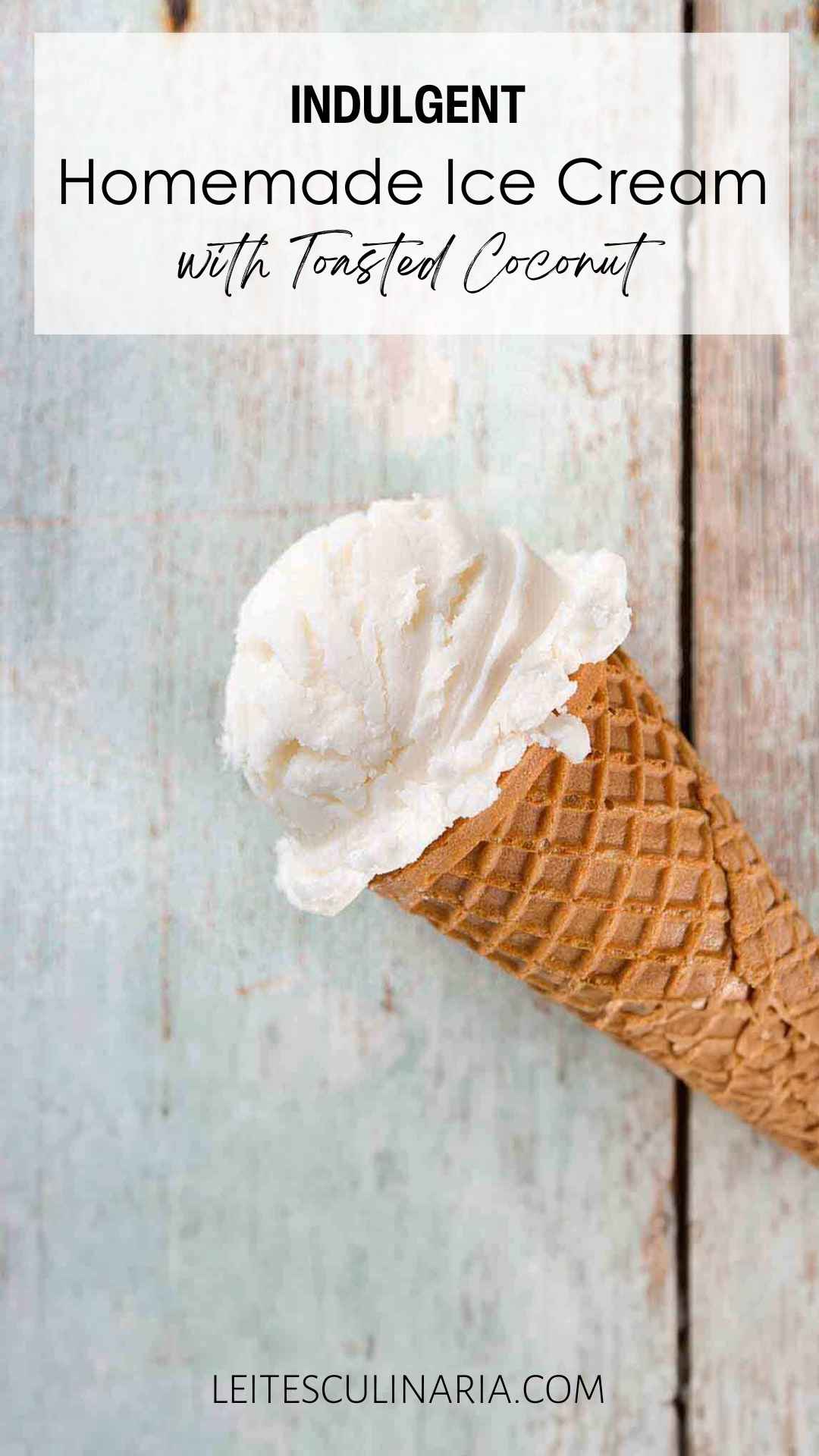
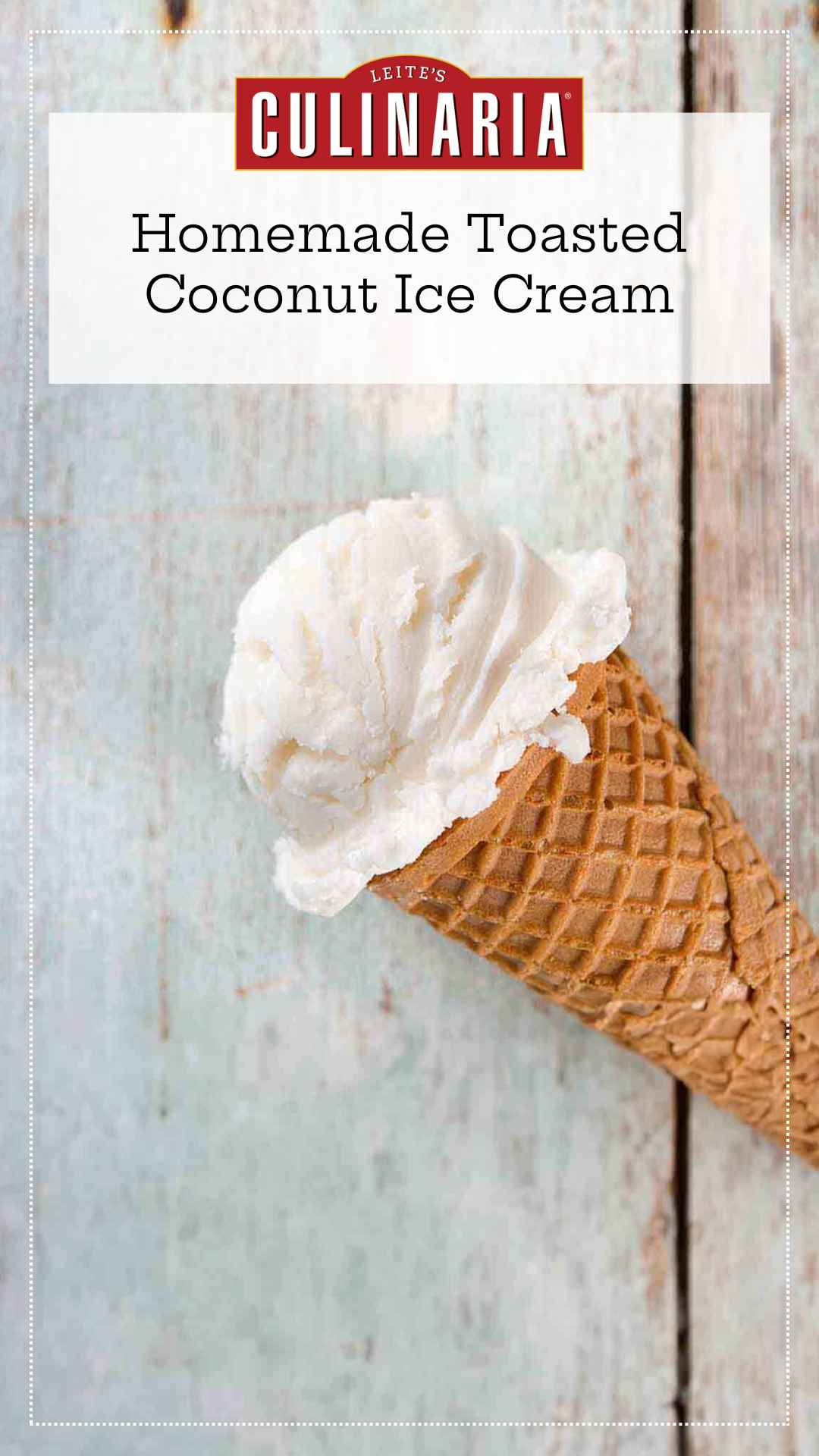

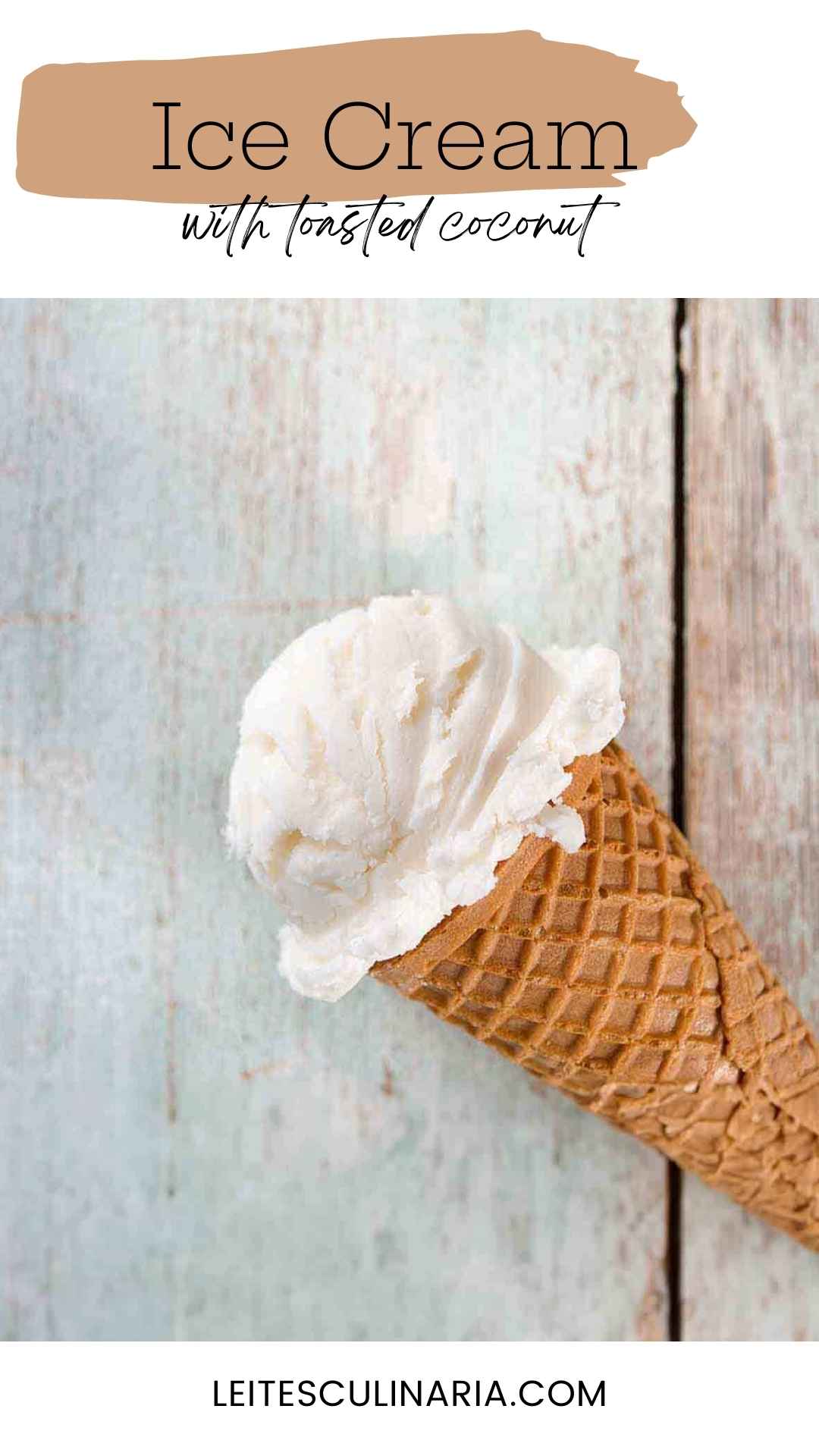




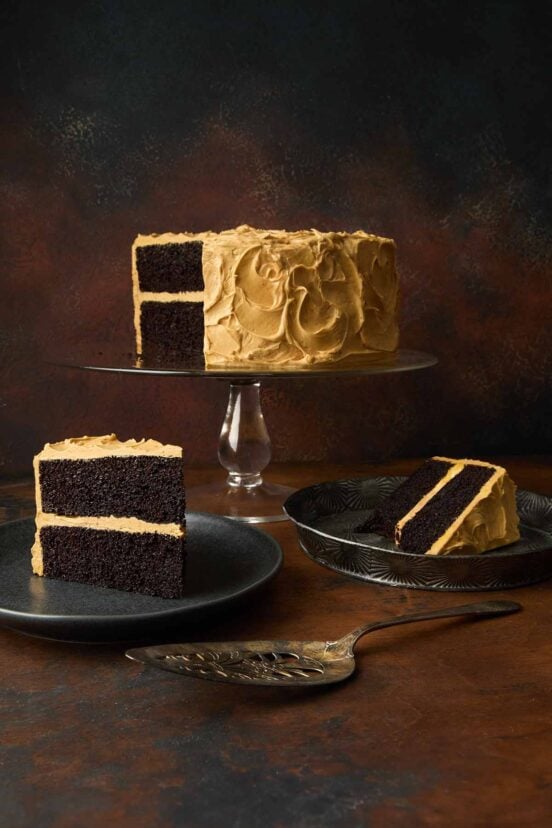

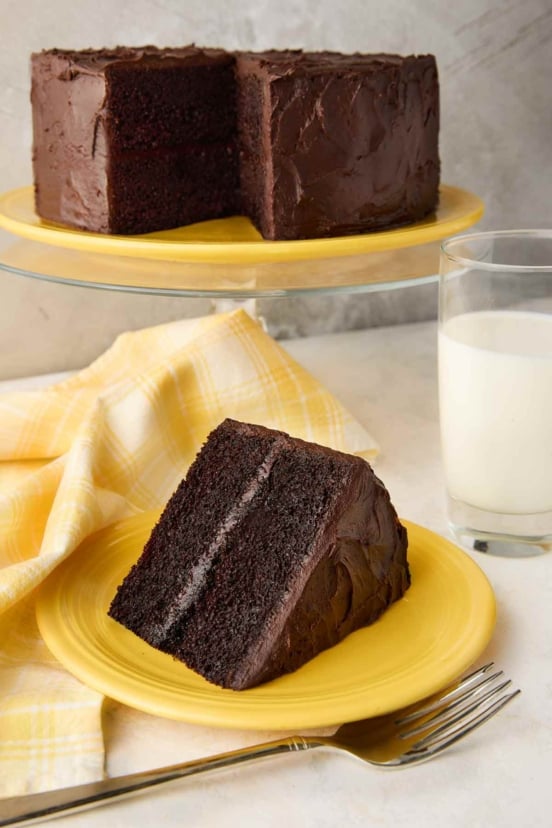









I made this and it was amazing – one of the best ice creams I’ve ever had. The richness of the coconut infusion is like a deeply caramelized vanilla. Yum.
One tweak – in addition to the unsweetened shredded coconut used for infusing the milk/cream, I also toasted some cane-sugar-sweetened organic shredded coconut and mixed it in while the ice cream was churning – I highly recommend this.
On the first night, I paired the ice cream with homemade salted butter caramel sauce and on the second, homemade chocolate syrup and chopped dry roasted and salted macadamia nuts. Honestly, it doesn’t need any accompaniment because the flavor is exquisite but it’s fun to try new things.
Terrific, Linda! Thank you so much for sharing your tips and tricks!
I took the toasted coconut and dried it in the oven at 175°F. I folded it into some brownie batter and sprinkled some on top after I removed the brownies from the oven. A scoop of ice cream on top of the warm brownie was decadent.
Niiiiiice, Ted! Thanks so much for sharing your toasting trick!
I replaced the final cup of cream (that you add the custard to) with full-fat coconut milk and it was perfectly creamy.
Lovely tweak, Claire. Brilliant. Appreciate you taking the time to let us and other readers know!